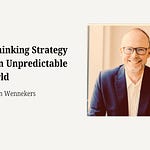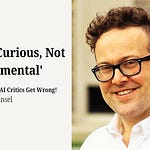Hi, I’m Charley, and this is Untangled, a newsletter about our sociotechnical world, and how to change it.
Untangled crossed the 8,000 subscriber mark this week. Woot!
Come work with me! The initiative I lead at Data & Society is hiring for a Community Manager. Learn more here.
Last week, I shared my conversation with award-winning AI reporter Karen Hao on OpenAI’s mythology, Meta’s secret, and Microsoft’s hypocrisy.
I launched my new course, Sociotechnical Systems Change in Practice. The first cohort will take place on January 11 and 12, and you can sign up here. (As you’ll see, I’ve decided to offer a free 1:1 coaching session to all participants following the course.)
🚨Untangled is 40 percent off (this is the largest discount I’ve offered, and it will end in two weeks), and I partnered with
to offer you her great newsletter The Golden Hour for free! Signing up for Untangled right now means you’ll get $140 in value for $54.On to the show!
This week I’m sharing a conversation with and Nik Marda on the potential of public AI. We recorded the conversation before the election. It might seem like an odd conversation to pipe into your earbuds now. Yes, the world looks differently than it did then. But AI should still serve our collective goals, it should be shaped by our participation, and it should be accountable to us. Right, the ‘public’ doesn’t just mean the government — it means us! As civil rights groups and policy advocates prepare to play defense over the next four years, we must also articulate an affirmative vision of the future, and work to ensure our technologies serve it, and us. Nik and Jasmine’s paper — and this discussion — offer helpful guide to building that future.
We discuss:
What ‘public AI is, and the importance of articulating an affirmative vision of the future we want to create.
The three core attributes that animate public AI — public goods, public orientation, and public use — and what would need to change to realize its potential.
Shifting how we collectively understand AI — what it is, what it’s not, what it can do, what it can’t.
How our public imagination tends to conjure AI extremes — utopias where no one has to work and and dystopias where AI somehow, someway, tripwires an existential event — and what a ‘public AI’ future might look like.
Okay, that’s it for now,
Charley














